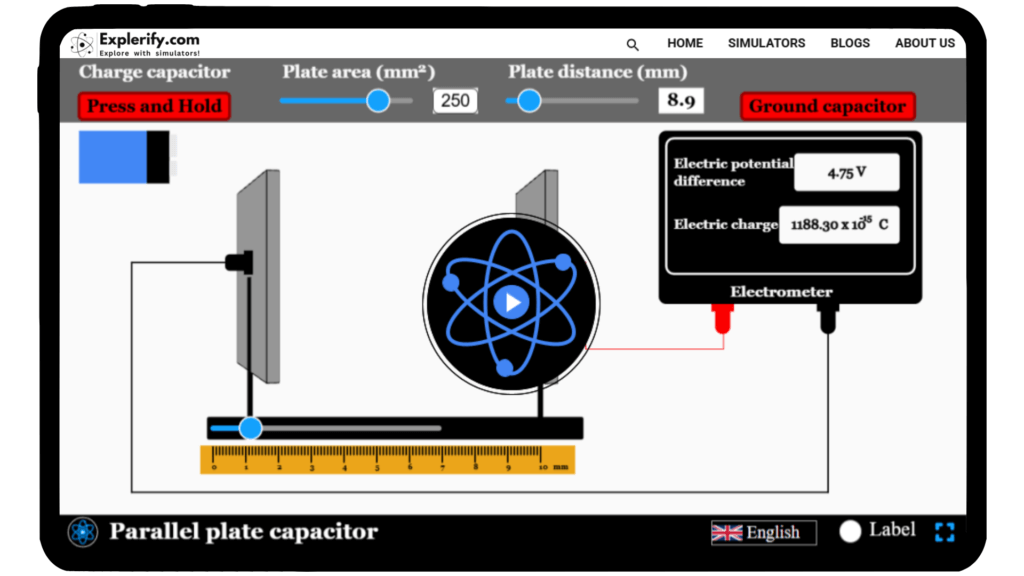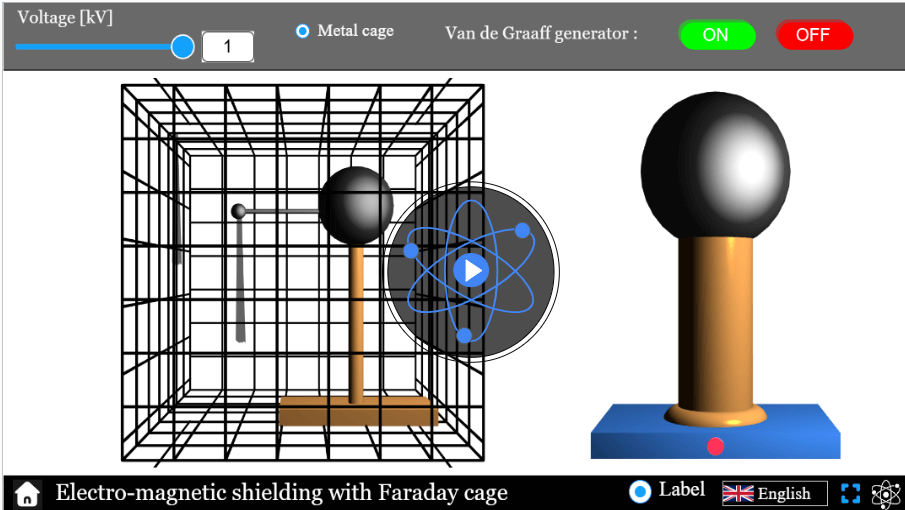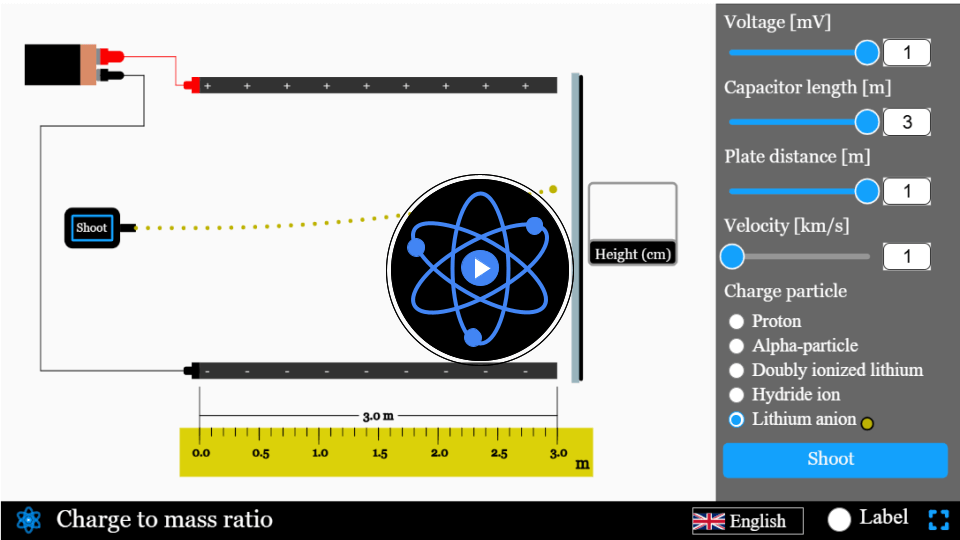Parallel plate capacitor simulator
Explore the charging and discharging processes of a parallel plate capacitor using our interactive simulator.
Parallel plate capacitor
Physics is at the heart of many everyday phenomena, often invisible but powerful. Have you ever wondered how capacitors store and release energy in electronic circuits? The answer lies in the fascinating principle of capacitance. With our interactive parallel plate capacitor simulator, you can explore this concept firsthand. Adjust the plate separation, area, and voltage to see how they affect the capacitor’s behavior. Uncover the science behind this essential electrical component — dive in and start experimenting today!
\( Q = \frac{\epsilon_{0}AV}{d}
\)
Mathematical description
where:
- \( Q \) is the charge on the capacitor in Coulombs
- \( V \) is the voltage across capacitor in Volts
- \( \epsilon_{0}\) is the permittivity of the free space \((8.854 \times 10^{-12} F/m) \)
- \( A \) is the area of plate in square meters
- \( d \) is the distance between plate in meter
Simulator
Experiment with the controls, change variables, and see how they affect the charge storage in the capacitor.
Interactive Physics Simulator – Parallel Plate Capacitor
🌟 You May Also Like
Suggested experiments and activities based on your progress...
FAQs on Parallel Plate Capacitor
Qus 1. What is a parallel plate capacitor, and how does it work?
A parallel plate capacitor is an electrical device consisting of two conductive plates separated by an insulating material (dielectric). When a voltage is applied, it stores electric charge on the plates, creating an electric field. This stored energy is used in various circuits for energy storage, filtering, and more.
Qus 2. What factors affect the capacitance of a parallel plate capacitor?
The capacitance depends on three main factors:
- Plate Area (A): Larger area increases capacitance.
- Plate Separation (d): Smaller separation increases capacitance.
- Dielectric Material: A higher dielectric constant () increases capacitance by reducing the electric field leakage.
Qus 3. What is the role of the dielectric in a parallel plate capacitor?
The dielectric is an insulating material between the plates that increases the capacitor’s ability to store charge. It reduces the electric field between the plates and increases capacitance. Common dielectrics include air, glass, and polymers.
Qus 4. How is energy stored in a parallel plate capacitor?
The energy stored in a parallel plate capacitor is given by the formula: \( E = \frac{1}{2} C V^2\). Here \( C\) is the capacitance and \(V\) is the voltage across the plates. This energy is stored in the electric field between the plates and can be used in circuits when needed.
Qus 5. What are the common applications of parallel plate capacitors?
Parallel plate capacitors are widely used in:
- Energy storage systems
- Timing circuits
- Signal filtering in electronic devices
- Smoothing voltage fluctuations in power supplies
Qus 6. What happens if the plates of a parallel plate capacitor are too close?
If the plates are too close, the dielectric may break down, causing a short circuit. This is known as dielectric breakdown and can damage the capacitor. Proper spacing and a suitable dielectric material are essential to prevent this.
Qus 7. Can a parallel plate capacitor work without a dielectric?
Yes, a parallel plate capacitor can work without a dielectric, using air as the insulating material. However, the capacitance will be lower compared to using a high-dielectric constant material.
Qus 8. How does the capacitance change if the dielectric is removed?
If the dielectric is removed, the capacitance decreases because the dielectric constant \( (\epsilon_r) \) becomes 1 (for air or vacuum). This reduces the ability of the capacitor to store charge at the same voltage.
Qus 9. Why are parallel plate capacitors used in experiments to study electric fields?
Parallel plate capacitors are ideal for studying electric fields because they create a uniform electric field between the plates. This uniformity makes them perfect for experiments related to field strength, potential difference, and charge distribution.





Would be nice to have plot to visualise charge and field variation with distance between capacitor plate?
Hi Tushar,
We’re in the process of adding the graph — we’ll notify you as soon as it’s done!